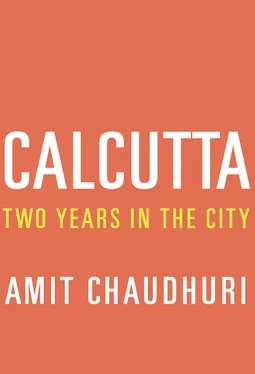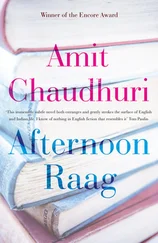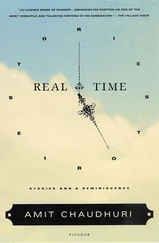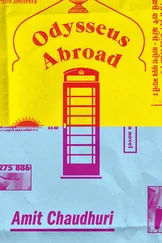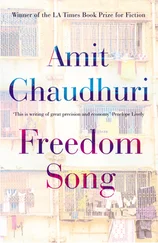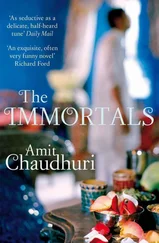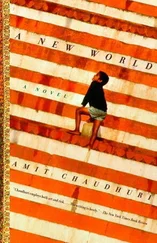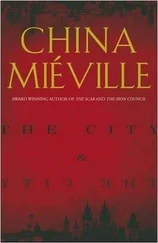In a room in All Souls College, Oxford, straining to listen to the faltering voice of Prof. Braja Dulal Chattopadhyay as he spoke of the Ramayana , I became aware of the timeless lineage of these conflicts now assailing our land. Prof. Chattopadhyay’s lecture concerned certain inexplicable actions perpetrated by the virtuous Lord Rama, the repository of Hindu dharma. One of these was the heinous slaying by Rama of Vali, the valiant monkeyking of a forest kingdom, whom he killed with an arrow shot from behind as Vali wrestled with his own brother. Rama’s action is attributed to Vali’s conflict with this brother, Sugreev, Rama’s friend: for, certainly, Rama and Vali had not been antagonists, and the former had no other reason to kill the latter. In fact, as Vali lies dying, he asks Rama: “What was my crime?”
Prof. Chattopadhyay, if I remember right, pointed out that independent forest kingdoms often sprang up in India, and were seen as a threat to the ethos and sovereignty of the mainland. It was for this reason that Vali would have had to die; because, for Rama, he represented a threat to the norm, to the absolute sway of dharma.
As to how much Bengal would open up again to the world, as it had in the eighteenth century, was a question left hanging in the air. People were trying to shrug off, in a sheepish way, the feeling of having missed the boat that had troubled them until May 2011. For the middle class, international isolation was measured by the number of direct flights there were to London; there was none. Lufthansa, too, providing the last umbilical lifeline to a tarnished but persistently desirable Western capitalism, announced, in December, the scrapping of its flight to Frankfurt, a punishment for poor business-class activity. Nevertheless, we in Calcutta were still in the year’s most paradisial time, heading for another Christmas. It was around now I was reminded, because of an academic paper I happened to read, of Carlo Levi’s Christ Stopped at Eboli , a record of a year (1935–36) spent under duress in two obscure towns in Southern Italy, Grassano and Aliano, the latter renamed “Gagliano” in the book. Levi, exiled there by Mussolini, says, “The title of the book comes from an expression by the people of ‘Gagliano’ who say of themselves, ‘Christ stopped short of here, at Eboli’ which means, in effect, that they feel they have been bypassed by Christianity, by morality, by history itself — that they have somehow been excluded by the full human experience.” I once saw a Penguin Modern Classics edition of this book in Oxford, in 1987; picked it up; put it back again. My memory refreshed and piqued by the paper, I was thinking of Levi’s memoir while listening to Rakhi Sarkar, active in the Calcutta art world, married to Ananda Bazar Patrika ’s Aveek Sarkar, give an impassioned account at an event of why she and others had resolved in 2003 to put into motion the idea of KMOMA, or the Kolkata Museum of Modern Art; for the first major Picasso exhibition in India had come to Delhi and Bombay, but bypassed Calcutta for its paucity of museum space and infrastructure. The insult was deep — to a region of the world that had fostered India’s first home-grown style in modern art, the Bengal School, and where (it was doubtful if Calcutta itself remembered this) the works of the Bauhaus painters were exhibited in 1922 at the prodding of Tagore — who much admired Paul Klee — and as a consequence of the critic Stella Kramrisch’s enterprisingness. I happened to be in Delhi during Picasso’s visit there, and, no great admirer of the Spaniard, went obediently from room to room to study again what I’d seen reproduced in encyclopedias and magazines a hundred times. But the hurt hadn’t healed in Calcutta, or so it seemed from Rakhi Sarkar’s speech. Flippantly, I considered naming the book I was writing Picasso Stopped at New Delhi— but remained tempted, at the same time, by the all-purposive, ambiguous Calcutta .
* * *
I’ve used the pronoun “she” of the kaajer lok because they are , mainly, women — except the drivers, who are a special breed and a cut above the kaajer lok. Shampa, who was married off hastily before succumbing to TB, experienced marriage for what it is in its first celebratory phase in a working-class woman’s life — a rescue and absolvement from a future of domestic work. If the man is sober and relatively well-off — that is, if he owns a small shop or a taxi — it’s possible his wife will be spared from becoming part of the immense churning that is kaajer lok. But even if he isn’t a destitute alcoholic, she, once the bliss of early married life is over and reality crowds in, might well start work as a maid, especially if the family is ambitious, and wants to give their children an education better than they had. Most often the men aren’t sober. This is what adds, in periodic waves, new women to the ranks of the kaajer lok. These days, very few women search for work cold, in the streets, or dependent on their friends’ advice, but turn up at one of the several “centres” in Calcutta that supply houses with domestics and carers. The advantage for the domestic of working via the centre is that they’re paid a daily wage rather than a monthly salary, and this works out better for them, as the wage adds up to a more substantial salary than they’d have got as a full-time employee. In return, the centre keeps a small percentage. My father’s carer, Kamala, comes to us from one of the smaller and less greedy of these centres, and she has to give to it only ten of the one hundred and ninety rupees she earns daily. In return, she’s with my father for a full twelve hours, sometimes nodding off, as she has a punitive routine, and on certain days wakes up at three o’clock in the morning to collect water because of a recurrent drinking water shortage in her area, VIP Nagar. (No problem with running water for bathing, she says; it’s the mishti or “sweet” drinking water that’s in short supply, and is provided by municipal corporation trucks at dawn, distributed by a pipe three times a week to people who’ve presumably been lining up with the resolution of shoppers at a sale.) She’s here at eight to attend to my father. When she rises and walks about, it’s in a scalded tiptoe, like the devout negotiating a bed of coals, an effect created by her corns. My father, whose main aim now is to be left alone, can’t stand Kamala; but it’s with my mother that she has repeated spats, as once daughter-in-law and mother-in-law did, mysterious, bottled-up outbursts, indicative that each has a strong view on truth and reality, but also of the wearingness of human contact, which rarely ever does credit to human beings.
I recently called the person who runs the centre through which we employ Kamala; he was loath to meet me. “Let’s talk on the phone please,” he said. “I don’t know enough about this business — it’s my wife who really runs it. She’s away.” His wife had been a nurse at Ruby Nursing Home, and then Divine Nursing Home, and had made good use of the networks she’d built up of carers and nurses when they started the centre in 2009. This man, Debashish Das, had been a manager in a small fertiliser company, then branched out, with the impulse towards freedom common to middle-class Bengalis, into the fertilisers business himself. That venture (as is also often the case with those Bengalis’ bright ideas) was a non-starter; unrewarding, with farmers deferring payments, and too demanding. He then got into the private car hire business, first with a Tata Indigo, and then an Indica; it changed Mr. Das’s life, and became a limited but flourishing trade. This centre for domestics was his latest essay, established upon his wife’s contacts, and an enterprise he was pretty confident about. “There’ll always be demand,” he told me.
Читать дальше
